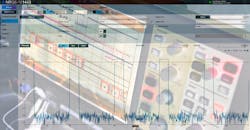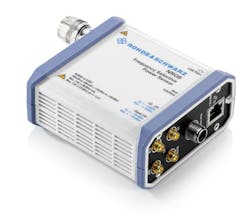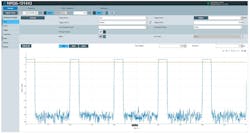Frequency-Selective Power Sensor Combines Best of Both Worlds
Download this article in PDF format.
Power meters and spectrum analyzers are fundamental instruments in any RF/microwave test lab. But what do you get when you combine the accuracy of a power meter with the dynamic range of a spectrum analyzer? Those intrigued by that question may want to consider the NRQ6 frequency-selective power sensor developed by Rohde & Schwarz (Fig. 1).
1. The NRQ6 frequency-selective power sensor covers a frequency range of 50 MHz to 6 GHz.
The NRQ6, based on receiver technology, can perform band-limited power measurements, i.e., power measurements on a selected transmission channel. What’s impressive about the NRQ6 is its measurement range—it’s able to measure signals ranging from −130 to +20 dBm. In terms of frequencies, the NRQ6 has a measurement frequency range of 50 MHz to 6 GHz. It offers a measurement bandwidth of 100 MHz.
A LAN web interface controls the NRQ6. Connection to the LAN is achieved with a Power-over-Ethernet (PoE+) switch. In addition, the power sensor’s integrated web server makes it possible to operate the graphical user interface (GUI) without any extra software—all that’s needed is a PC with a web browser.
The NRQ6 power sensor allows for more than just conventional continuous average-power measurements. For one, the trace-display functionality enables users to analyze pulsed signals (Fig. 2). The NRQ6 is also well-suited for adjacent-channel leakage ratio (ACLR) measurements. The ACLR measurement function, which is accessible from the web GUI, can automatically be set to pre-defined filters in accordance with Third Generation Partnership Project (3GPP) specifications.
2. Pulsed-signal analysis is one of the capabilities offered by the NRQ6 power sensor.
In addition, the optional NRQ6-K1 in-phase/quadrature (I/Q) data interface makes it possible to capture vector-modulated I/Q signals. With the NRQ6-K1 option, captured I/Q data can be downloaded to a PC and further analyzed.
Targeted applications for the NRQ6 include transmitter power calibration, as the sensor allows users to perform calibrations at extremely low power levels. In fact, Rohde & Schwarz describes the NRQ6 as a “compact, single-device solution for calibrating transmit power,” as no additional instruments or components—such as spectrum analyzers and power splitters—are needed. And since the sensor can directly connect to a DUT, no cable is required.
Measuring band-limited power of multi-standard radios (MSRs) is another use case for the NRQ6. Hence, those involved with MSR base stations may want to take advantage of the NRQ6.
The NRQ6 frequency-selective power sensor is available now.
ROHDE & SCHWARZ GMBH & CO. KG, P. O. Box 80 14 69 81671, Munich, Germany; 888-TEST-RSA (1-888-837-8772)



